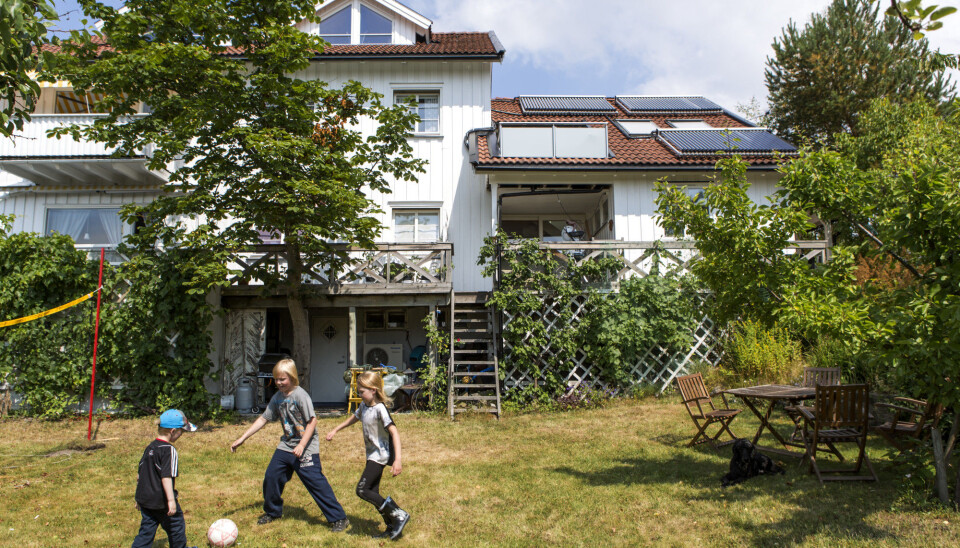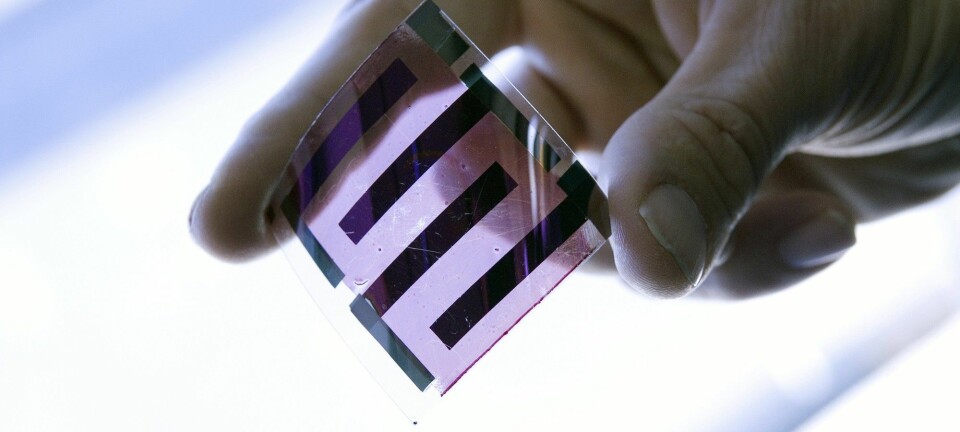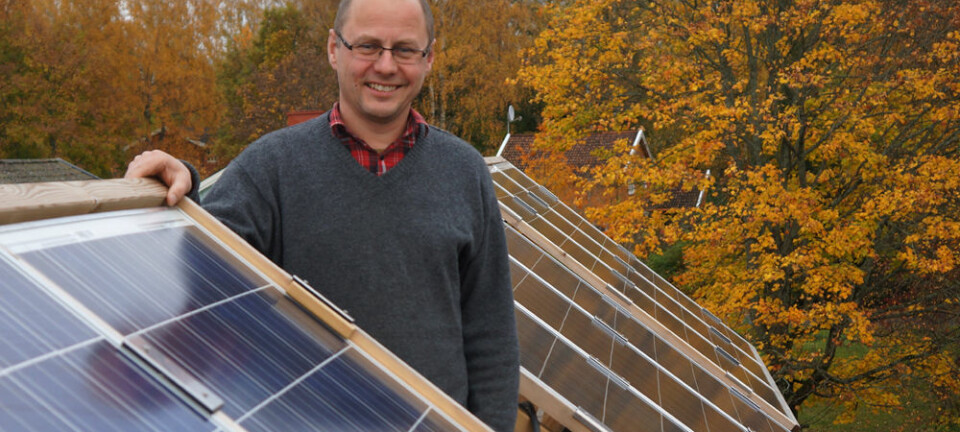An article from Norwegian SciTech News at SINTEF

The typical Norwegian solar heating system owner is a man in his mid-fifties
He is resourceful, technically skilled, wants to save money and protect the environment.
Denne artikkelen er over ti år gammel og kan inneholde utdatert informasjon.
This has all been revealed in a report published by SINTEF Building and Infrastructure. A project group made up of social scientists and engineers set themselves the goal of boosting their knowledge about solar heating systems in Norway. It wanted to find out who was installing the systems, why they did so, and what their experiences with the installations had been.
“Naturally we want more favourable policies in place to enable more Norwegians to install solar heating systems”, says Åshild Lappegard Hauge at SINTEF. “So we need to get information like this out to the general public”, she says.
The Norwegian Solar Heating Association has provided assistance by first contacting system owners, who were then informed about the project and asked to share their experiences. Seven solar cell systems were selected, all of which were installed in private residences. Housing association estates with solar heating systems were also included in the survey, which involved inspection tours, interviews with users, and the collection of technical data. The project group also compared measurements taken from one of the production simulation systems included in the Polysun programme.
Solar is cool
These enthusiastic sun trappers seem to be doing their homework very thoroughly. The seven respondents had compared solar with other heating systems, and had shopped around to get quotes from several suppliers. Many said they chose a solar heating system in order to become energy self-sufficient – others because this form of energy seemed natural to them.
“They’re proud of their systems, and think it’s ‘cool’ to have their houses heated by solar energy”, says Hauge. “Many have lots of good things to say about solar heating”, she says. “The father of one respondent is a green enthusiast and was a pioneer in this field. Others have travelled abroad and got to know people running their own systems who were happy to share their experiences.”
Poor skills and equipment
Most of the respondents worked in technical jobs, often in connection with energy systems, and obtained good advice from their colleagues once they got their projects off the ground. For most of them it was a hard-earned lesson to find out that they had to assemble their systems from parts obtained from different suppliers. Because of this the systems were more or less self-built. Some experienced faulty manufacture and defects which resulted in extra work.
In order to make servicing easier, some respondents deliberately chose parts and equipment manufactured in Norway, but this proved not to be a good strategy. Many experienced the problem that the plumbing trade lacks the skills and expertise to install equipment of this type. It was difficult to find plumbers who would take on such jobs, and for those who did, faults of all shapes and sizes revealed themselves afterwards. In such cases it was crucial to their success that the owners themselves knew what they were doing.
Efficiency
Most of the systems were more efficient than anticipated, and some produced more energy than expected. Some even produced much more energy than planned.
When asked whether with hindsight they would have done things differently, some respondents said that it is advisable to install lightning sensors and conductors right from the start. One respondent said that he would also have installed more accurate metering equipment at the very beginning. Others mentioned that under Norwegian climatic conditions there was no need to install a vacuum system since when snow falls on evacuated tube collectors and is slow to melt, it prevents sunlight from getting through.
How do we get more systems up and running?
“Our respondents had many suggestions as to what incentives would be needed to promote the rapid expansion of solar heating systems here in Norway”, says Hauge.
They talked about subsidies from Enova (the state-owned green energy funding organisation), equipment price reductions, and the need to develop ready-to-install systems.
“They also mentioned better media coverage of more example systems in action. Enthusiastic technicians need to promote interest for such systems by holding training courses, and efforts must be made on aesthetic issues in order to generate a good image for solar panels. Maybe solar panels will one day become a status symbol on a par with today’s electric cars?”, says Hauge.
------------
Read the Norwegian version of this article at forskning.no


































